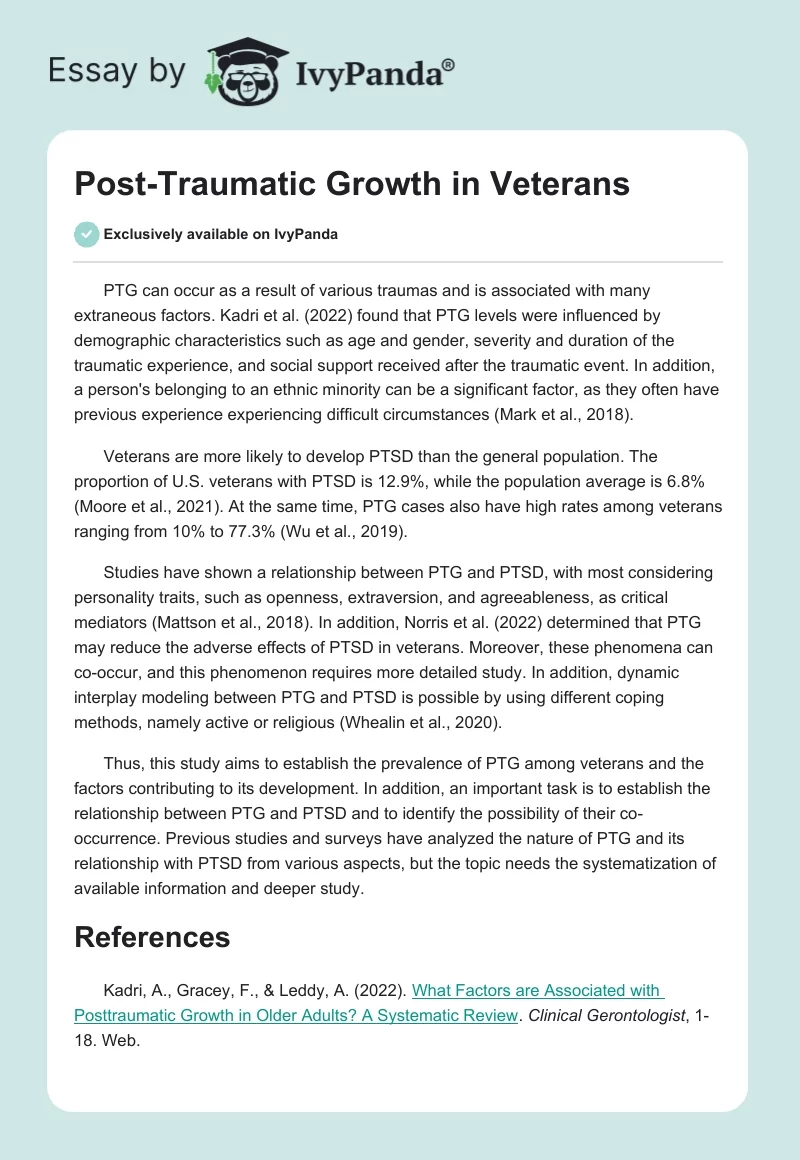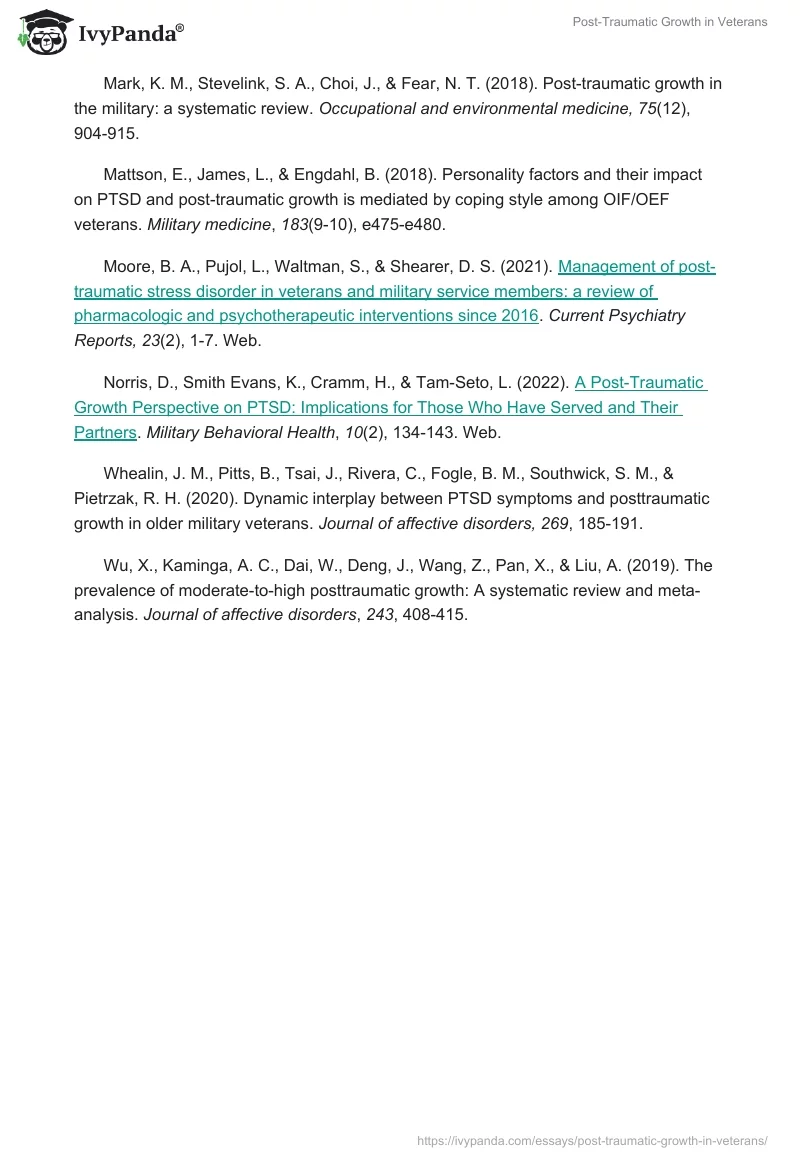PTG can occur as a result of various traumas and is associated with many extraneous factors. Kadri et al. (2022) found that PTG levels were influenced by demographic characteristics such as age and gender, severity and duration of the traumatic experience, and social support received after the traumatic event. In addition, a person’s belonging to an ethnic minority can be a significant factor, as they often have previous experience experiencing difficult circumstances (Mark et al., 2018).
Veterans are more likely to develop PTSD than the general population. The proportion of U.S. veterans with PTSD is 12.9%, while the population average is 6.8% (Moore et al., 2021). At the same time, PTG cases also have high rates among veterans ranging from 10% to 77.3% (Wu et al., 2019).
Studies have shown a relationship between PTG and PTSD, with most considering personality traits, such as openness, extraversion, and agreeableness, as critical mediators (Mattson et al., 2018). In addition, Norris et al. (2022) determined that PTG may reduce the adverse effects of PTSD in veterans. Moreover, these phenomena can co-occur, and this phenomenon requires more detailed study. In addition, dynamic interplay modeling between PTG and PTSD is possible by using different coping methods, namely active or religious (Whealin et al., 2020).
Thus, this study aims to establish the prevalence of PTG among veterans and the factors contributing to its development. In addition, an important task is to establish the relationship between PTG and PTSD and to identify the possibility of their co-occurrence. Previous studies and surveys have analyzed the nature of PTG and its relationship with PTSD from various aspects, but the topic needs the systematization of available information and deeper study.
References
Kadri, A., Gracey, F., & Leddy, A. (2022). What Factors are Associated with Posttraumatic Growth in Older Adults? A Systematic Review. Clinical Gerontologist, 1-18. Web.
Mark, K. M., Stevelink, S. A., Choi, J., & Fear, N. T. (2018). Post-traumatic growth in the military: a systematic review. Occupational and environmental medicine, 75(12), 904-915.
Mattson, E., James, L., & Engdahl, B. (2018). Personality factors and their impact on PTSD and post-traumatic growth is mediated by coping style among OIF/OEF veterans. Military medicine, 183(9-10), e475-e480.
Moore, B. A., Pujol, L., Waltman, S., & Shearer, D. S. (2021). Management of post-traumatic stress disorder in veterans and military service members: a review of pharmacologic and psychotherapeutic interventions since 2016. Current Psychiatry Reports, 23(2), 1-7. Web.
Norris, D., Smith Evans, K., Cramm, H., & Tam-Seto, L. (2022). A Post-Traumatic Growth Perspective on PTSD: Implications for Those Who Have Served and Their Partners. Military Behavioral Health, 10(2), 134-143. Web.
Whealin, J. M., Pitts, B., Tsai, J., Rivera, C., Fogle, B. M., Southwick, S. M., & Pietrzak, R. H. (2020). Dynamic interplay between PTSD symptoms and posttraumatic growth in older military veterans. Journal of affective disorders, 269, 185-191.
Wu, X., Kaminga, A. C., Dai, W., Deng, J., Wang, Z., Pan, X., & Liu, A. (2019). The prevalence of moderate-to-high posttraumatic growth: A systematic review and meta-analysis. Journal of affective disorders, 243, 408-415.


